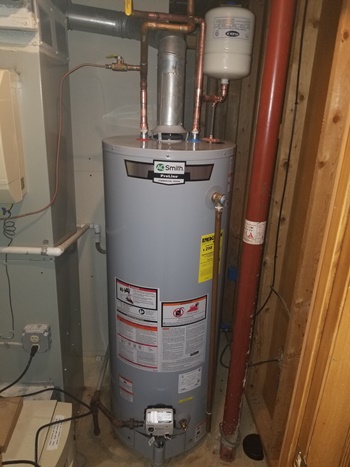Specialist Guidance for Caring for Your Home's Hot Water SystemWhat to Care for Your Home's Hot Water System Effectively
Specialist Guidance for Caring for Your Home's Hot Water SystemWhat to Care for Your Home's Hot Water System Effectively
Blog Article
How do you really feel on the subject of What Kind of Maintenance Do Water Heaters Need??

Warm water is vital for daily comfort, whether it's for a refreshing shower or washing recipes. To ensure your warm water system runs effectively and lasts longer, normal maintenance is essential. This article offers sensible ideas and insights on exactly how to maintain your home's warm water system to avoid interruptions and costly repair services.
Intro
Maintaining your home's warm water system might appear challenging, yet with a few basic steps, you can ensure it runs efficiently for many years ahead. This guide covers every little thing from understanding your warm water system to do it yourself maintenance suggestions and recognizing when to call in expert aid.
Importance of Preserving Your Warm Water System
Normal upkeep not only expands the lifespan of your hot water system yet also ensures it runs successfully. Neglecting maintenance can cause lowered efficiency, greater power bills, and even early failing of the system.
Indicators Your Warm Water System Needs Maintenance
Understanding when your warm water system requires focus can protect against major problems. Keep an eye out for indicators such as inconsistent water temperature, odd sounds from the heater, or rusty water.
Comprehending Your Warm Water System
Prior to diving right into maintenance tasks, it's valuable to comprehend the standard components of your hot water system. Generally, this consists of the hot water heater itself, pipes, anode poles, and temperature level controls.
Month-to-month Upkeep Tasks
Regular monthly checks can help catch minor problems prior to they rise.
Purging the Hot Water Heater
Purging your hot water heater removes sediment build-up, boosting performance and extending its life.
Checking and Changing Anode Rods
Anode poles stop rust inside the tank. Evaluating and changing them when worn is important.
Examining and Adjusting Temperature Level Settings
Readjusting the temperature level settings guarantees optimum efficiency and security.
DIY Tips for Upkeep
You can do numerous maintenance jobs on your own to maintain your warm water system in leading condition.
Checking for Leaks
Consistently evaluate pipelines and links for leakages, as these can lead to water damage and greater bills.
Testing Stress Alleviation Valves
Checking the pressure relief valve ensures it operates appropriately and stops extreme pressure buildup.
Protecting Pipes
Shielding hot water pipelines minimizes heat loss and can conserve energy.
When to Call an Expert
While DIY upkeep is advantageous, some concerns need professional know-how.
Complex Concerns Requiring Specialist Help
Instances include significant leaks, electrical troubles, or if your water heater is consistently underperforming.
Regular Professional Maintenance Conveniences
Expert maintenance can consist of extensive examinations, tune-ups, and guaranteeing conformity with security standards.
Verdict
Routine upkeep of your home's warm water system is essential for effectiveness, longevity, and expense savings. By adhering to these suggestions and recognizing when to seek expert help, you can make sure a dependable supply of warm water without unforeseen disturbances.
How to Maintain an Instant Hot Water Heater
Before tinkering with your hot water heater, make sure that it’s not powered on. You also have to turn off the main circuit breaker and shut off the main gas line to prevent accidents. Also turn off the water valves connected to your unit to prevent water from flowing into and out of the appliance. 2. When you’re done, you have to detach the purge valves’ caps. These look like the letter “T” and are situated on either side of the water valves. Doing so will release any pressure that has accumulated inside the valves while at the same time avoid hot water from shooting out and burning your skin. 3. When the purge valves’ caps are removed, you have to connect your hosing lines to the valves. Your unit should have come with three hoses but if it didn’t, you can purchase these things from any hardware or home repair shops. You can also get them from retail stores that sell water heating systems. Read the user’s manual and follow it to complete this task properly. When the hosing lines are connected, open the purge port’s valves. 4. You should never use harsh chemical cleaners or solutions when cleaning your unit. Make use of white vinegar instead. It should be undiluted and you’ll probably use about 2 gallons. 5. Now flush your water heater. This task should probably take about 40 minutes. We can’t give you specific directions for this because the procedure is carried out depending on the type, model and brand of your heater. With that being said, refer to the user’s manual. 6. When you’re done draining the unit, you have to turn off the purge port valves again. Remove the hosing lines that you earlier installed on each of the water valves. Put the valve caps (purge port) back in their respective places and be very careful so as not to damage the rubber discs that are found inside these caps. 7. Now that everything’s back in place, check your user’s manual again to find out how to reactivate your water heating system. 8. Once it is working, turn one of your hot water faucets on just to let air pass through the heater’s water supply pipes. Leave the tap on until water flows smoothly out of it. https://www.orrplumbing.com/blog/2014/september/how-to-maintain-an-instant-hot-water-heater/

We are very serious about Tips For Maintaining Your Hot Water Heater and I hope you enjoyed reading the new piece. Sharing is good. You just don't know, you may very well be helping someone out. Thank you for being here. Don't hesitate to pay a visit to our website back soon.
Schedule Today Report this page